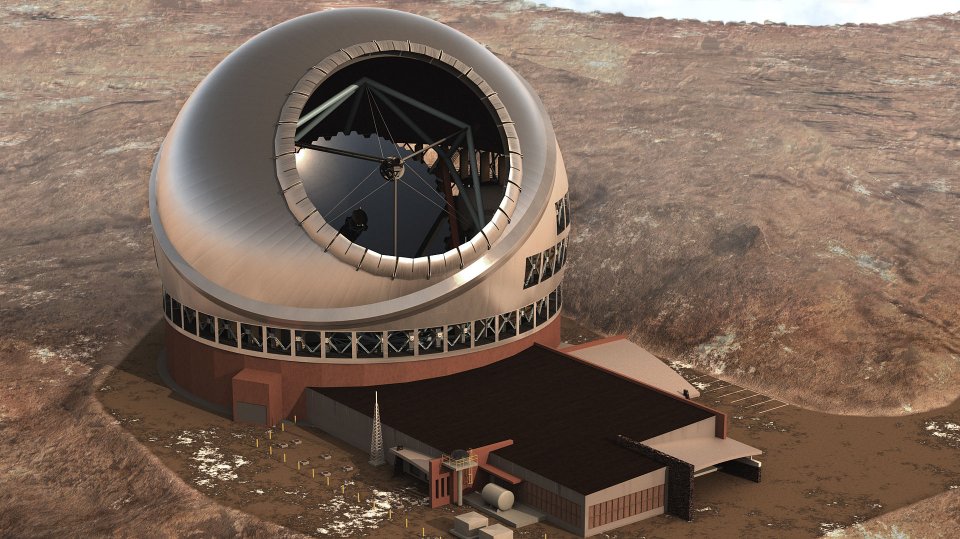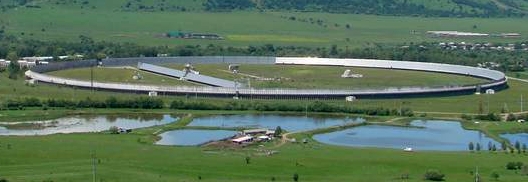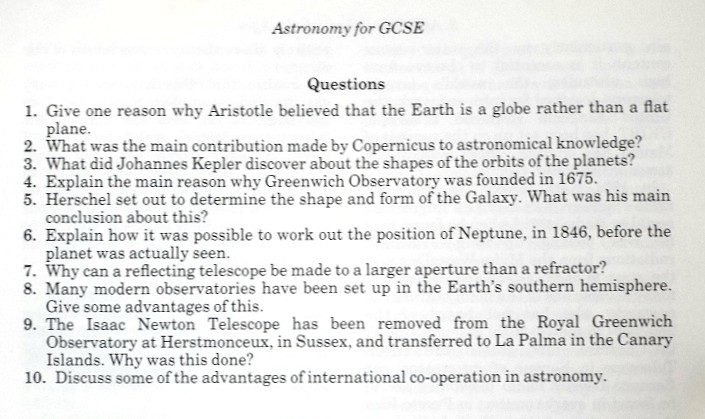In this section:
Page 1:
-
Aristotle
-
Eratosthenes
-
Aristarchus
-
Hipparchus
-
Ptolemy
-
Caliph Al-Mamun
-
Ulugh Beigh
-
Mikolaj Kopernik
-
Giordano Bruno
-
Tycho Brahe
-
Johannes Kepler
-
Galileo Galilei
-
Sir Isaac Newton
|
Page 2:
-
Robert Hooke
-
John Flamsteed
-
Edmond Halley
-
Christopher Wren
-
John Gadbury
-
William Lilly
-
Jeremiah Horrocks
-
Giovanni Cassini
-
Ole RÝmer
-
William Herschel
-
John Herschel
-
John Goodricke
-
John Couch Adams
-
Urbain Le Verrier
-
Lick Observatory
|
Page 3:
-
Meudon Observatory
-
Yerkes Observatory
-
Mount Wilson
-
Observatory
-
Edwin Hubble
-
George Ellery Hale
-
Royal Observatory
-
Siding Spring
-
Mauna Kea
-
Cerro Tololo Inter-American
Observatory
-
Kitt Peak
-
BTA-6
-
Mstislav Keldysh
|
This
page:
-
Whipple Observatory
-
Wyoming Infrared Observatory
-
United Kingdom Infra-red
Telescope
-
Thirty Meter Telescope
-
Karl Jansky
-
Jodrell Bank
-
Five-hundred-meter Aperture
Spherical Telescope
-
RATAN-600
-
and more
|
Obviously large mirrors pose
problems. The modern trend is to use
mirrors made in segments which can
be fitted together to produce the
correct optical curve. An example
was at the Whipple Observatory on
Mount Hopkins in Arizona, USA, in
the form of the MMT (Multiple Mirror
Telescope) Observatory which had six
183-cm mirrors operating together,
making a telescope equivalent to a
single 442-cm. However, due to
improved mirror technology the
smaller mirrors were replaced in
2000 with a single large mirror (the
telescope kept its original name).

The MMT
in 1981 showing its six primary
mirrors.
Another major development has been
the "Electronic Revolution"; just as
the photographic plate replaced the
human eye over a century ago, CCDs
(Charge-Couple Devices) have now
superseded those. No longer does an
astronomer have to stare for hours
at photographic plates in the dome;
everything is computerised - the
observer can be anywhere in the
world.
Moving
on to the topic of 'invisible
astronomy'...
William
Herschel (previously mentioned) was
the first to prove that the Sun
sends out infra-red radiation as
well as visible light, and now
infra-red astronomy is highly
important. It is essential to
observe from high altitudes because
much of the infra-red radiation is
blocked out by the Earth's air,
particularly by water-vapour
content. Thus we have such infra-red
telescopes as the Wyoming
Infrared Observatory (the
largest functional such telescope
from 1977 to around 1980) and, the
United Kingdom Infra-red
Telescope (UKIRT) which is on
the summit of Mauna Kea, Hawaii and now funded by NASA. This
one is set to be replaced the
Thirty Meter Telescope (TMT)
which is designed for
near-ultraviolet to mid-infrared
observations, although progress has
been hampered by those 'Mauna Kea'
oppositions mentioned above.

A
computer/artistic rendering of the
TMT.
Radio
astronomy began in 1931 when an
American radio engineer, Karl
Jansky, using an improvised
aerial to study 'static' found he
was picking up long-wavelength
radiations from the Milky Way.
|
"Who has
not heard of the Jodrell Bank
radio telescope in Cheshire,
England?" asks Patrick Moore. Or the now destroyed Arecibo radio telescope in Puerto
Rico (featured in my
Einstein@home section)? The former is now named the
Lovell Telescope in honour of its
creator, Sir Bernard Lovell
(1913-2012). The world's largest
'filled-aperture radio telescope' is
the Five-hundred-meter Aperture
Spherical Telescope (FAST) (五百米口径球面射电望远镜)
in China, nicknamed
Tianyan (below).

|
|

My photograph, taken in 2016, of
Jodrell Bank |
The
largest 'sparsely-filled radio
telescope' is RATAN-600 in
Russia. In 2015 it dected a strong
signal that closely matched what
would be expected for a distant
source and a SETI candidate and
unusual for a natural source.
However, the same artificial
appearance also makes a terrestrial
source likely, such as from a
military satellite,
secret/reconnaissance, or from a
faulty satellite in a slow spin.
Other observatories have failed to
corroborate the signal.

RATAN-600
In 1957
came the start of the Space Age with
the launch of Sputnik 1.
Since then there have been thousands
of satellites and probes launched.
We have the Hubble Space
Telescope (HTT) launched in
1990, a 239-cm
reflector, which has revolutionised our
outlook. We have X-ray telescopes,
and others that carry out their work
entirely above the screening layers
of our air.
- - - - - - - - - -
This
concludes Chapter 3 in the book. You
can subject yourself to the set of
questions from the book here:

Click here to proceed to Chapter 4.
[Back
to Top]
|